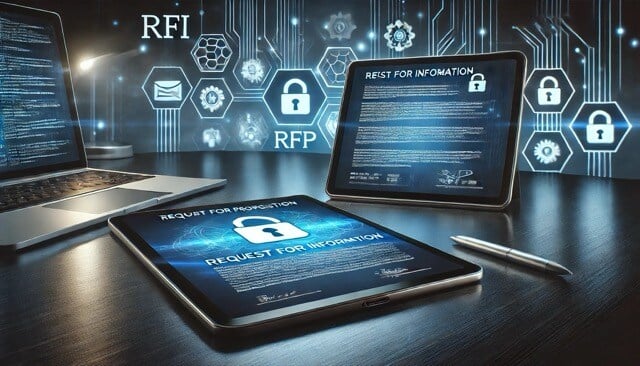Benchmarking your organization against the National Institute of Standards and Technology (NIST) Cybersecurity Framework (CSF) is a valuable step towards improving cybersecurity posture. The NIST CSF provides comprehensive guidelines and best practices for managing and reducing cybersecurity risks. While the NIST CSF is not a mandatory framework to comply with, several private and public organizations utilize the CSF for its flexible approach and guidance for managing cybersecurity risk.
Get Started on Benchmarking to the NIST Cybersecurity Framework
Here's a step-by-step guide on how security teams can benchmark their cybersecurity program to the NIST CSF:
Understand the NIST CSF: Start by thoroughly understanding the NIST CSF. It consists of five core functions: Identify, Protect, Detect, Respond, and Recover. Each process is divided into categories and subcategories, providing detailed guidance on cybersecurity practices.
Additionally, NIST has begun a new version of the CSF called NIST CSF 2.0, including a new core function, Govern. Recovery and response planning are critical, but well-defined roles and responsibilities are essential to efficiently managing cyber risk. The Govern function also includes establishing reporting mechanisms and senior leadership's involvement in cybersecurity decision-making.
Assess Current State: Before benchmarking, you need to know where your company currently stands regarding cybersecurity. Conduct a cybersecurity assessment to identify strengths and weaknesses in your existing security measures. This assessment can include reviewing policies, procedures, technologies, and personnel capabilities.
Running regular cyber risk assessments is critical for your cyber risk program. Assessments guide security professionals to decide the next course of action and prioritize areas of improvement. Security teams cannot confidently suggest remediation or growth plans without understanding the organization’s security posture.
Identify Your Goals: Determine your cybersecurity goals and objectives. What are you trying to achieve by benchmarking against the NIST CSF? Are you aiming to improve security, meet compliance requirements, or address specific vulnerabilities? Clearly define your goals to guide the benchmarking process.
A robust cyber risk program needs to meet several goals. It’s critical to list each plan and aim to meet them incrementally. CyberSaint encourages a six-step cyber risk automation process that tracks alongside the progression of the NIST CSF - taking your organization from an immature cyber stance to a comprehensive and proactive cyber-informed organization.
Map the NIST CSF to Your Organization: Adapt the NIST CSF to your organization's specific needs and industry. Tailor the framework by identifying which categories and subcategories are most relevant to your business and industry sector. Not every aspect of the framework may apply to your organization.
Perform Gap Analysis: Compare your cybersecurity practices to the NIST CSF framework. Identify gaps and areas where your company falls short of the recommended practices. This gap analysis will help you prioritize improvements and allocate resources effectively.
The NIST CSF complements several industry-standard frameworks like ISO 27001, CIS Top 18, GDPR, etc. CyberStrong’s automated crosswalking functionality is powered by patented NLP automation and can crosswalk large frameworks like the NIST CSF to any relevant or custom frameworks in seconds.
Develop an Action Plan: Based on the gap analysis, create a comprehensive action plan. Prioritize the areas needing improvement and assign relevant teams or individual responsibilities. The plan should include specific tasks, timelines, and resource requirements for risk remediation plans.
Monitor Progress: Continuously monitor and measure your progress. Use key performance indicators (KPIs) to assess the effectiveness of your cybersecurity initiatives. Regularly update your action plan and adjust strategies based on evolving threats and challenges.
Continuous Improvement: Treat cybersecurity as an ongoing process of constant improvement. Periodically review and update your benchmarking against the NIST CSF. The cybersecurity landscape is a highly dynamic environment. New technologies, frameworks, and threats are regularly introduced. Stay informed about emerging threats and evolving best practices, and be prepared to adapt your cybersecurity strategy accordingly.
Develop Your Cyber Practice with the NIST CSF
Remember that benchmarking against the NIST CSF is not a one-time effort but an ongoing commitment to improving cybersecurity resilience. By following these steps, your company can enhance its security posture and better protect against cyber threats. CyberSaint recognizes the importance of the NIST CSF, benchmarks its platform against this framework, and includes almost every facet of the platform, including its executive reporting tools.
Schedule a demo to see how CyberSaint works with the NIST CSF to deliver workflow efficiencies and real-time insights.





.png)
.png)
.png)
%201.png)
.png)




